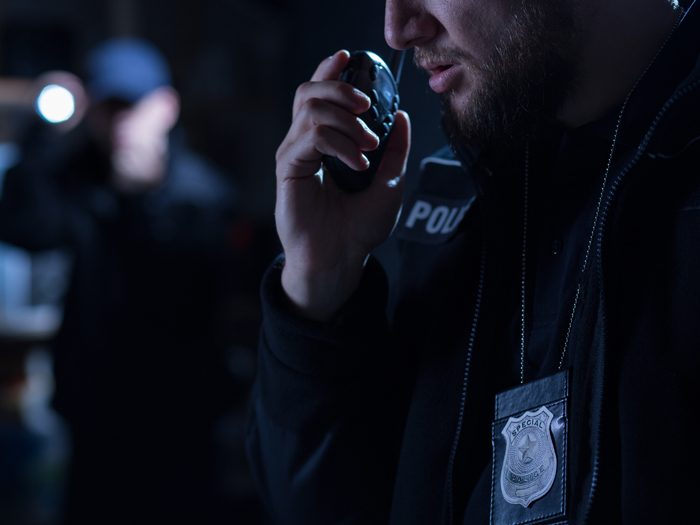Public Sector Risk
Risk on the Thin Blue Line

Police work is a risky job that is getting even more perilous.
The number of police officers shot and killed in the United States in 2016 increased by 64 (56 percent) over 2015, according to the National Law Enforcement Officers Memorial Fund.
If that statistic seems startling, consider the number of ambush-style police killings in 2016 — 21 — the highest total in more than two decades.
And that figure may well be surpassed in 2017, said Ken Wallentine, senior legal advisor for Lexipol, which provides best practice policy guidance to public safety agencies across the nation.
“Sadly, we are on track for another tragically record setting year,” with 17 targeted police officer killings already in 2017, said Wallentine, “and we’re not even half way through the year. I don’t remember ever seeing this before.”
Nancy Sylvester, managing director of Arthur J. Gallagher’s public sector practice is dismayed, but not surprised, by fatal gun attacks upon police.
“Is it increasing? Yes, and I’d never heard of that happening before. But now it’s expected.”
Barry Scott, risk manager for the City of Philadelphia said he’s trying not to be surprised, but instead to be aware about what’s going on.
“But certainly it’s an unusual phenomenon,” he said.
Build Trust, and Underwrite
The challenges facing public sector administrators charged with protecting police was part of Scott’s presentation at the RIMS conference in his city back in late April: police tactical awareness, officer mental health and well-being, police department support and training, “those were just some of the areas we talked about and it was very well received,” Scott said.
Fortunately, Scott was able to speak from a position of strength, having worked with the Philadelphia police department and its 6,300 police officers “to provide them with the tools they need to stay safe.”
Sensitivity training, de-escalation techniques and better ways of responding to the mentally ill underpin a new police culture. It’s also a culture where the mental and emotional well-being of officers is emphasized.
There were two targeted attacks resulting in injuries to Philadelphia police in 2016. Philadelphia experienced just one police fatality by firearm since August 2012.
Unfortunately, the risk profile Philly’s police officers face from violence remains high, and much of this has to do with one word, Scott said: trust. It’s the one thing that keeps him busiest — building trust within the community while ensuring police have the tools needed to protect themselves along with the community.
“From a risk perspective, we’re working with the mayor’s office, city council and legislative offices to try and make sure the laws we have are ones that end up leaving us better protected.”
A case in point, Scott said, is last year’s DNC convention in Philadelphia. Laws were adjusted to make incidents associated with public demonstrations a lower-grade crime “so that we weren’t arresting a number of people during the convention who were just demonstrating and exercising their civil rights. That kind of step really takes away some opportunities for more violent or dangerous confrontation,” he said.
That didn’t stop the city from purchasing protester insurance for the convention. As Scott told a reporter last year, “We’re looking to protect the city’s financial resources for the taxpayers who have given us those dollars to steward. So if we are able to buy insurance to do that, then it’s a great deal.”
Mental Health: a Two-Way Street
For others, the main problems associated with violence against police aren’t legal or monetary, but cultural. Groups like Black Lives Matters leave cops “grappling with a conundrum,” said Wallentine: citizens want police officers to effectively police their communities and yet “are hyper-critical of us when we engage in policing.
“We are hyper-exposed to danger and one of the cultural artifacts is that some officers are saying, `If I don’t want to get into trouble, I shouldn’t do anything.’ ”
Wallentine’s advice to police departments is to respond in a more nuanced fashion to the culture of caution that has always marked police work. That means creating an environment where police officers remain vigilant, but don’t over-read the clues in a domestic situation, for example (the most dangerous call for police), before that situation actually unfolds.
“We want officers to be careful, but we can’t have them behaving with hyper-vigilance and treating citizens as if they’re all the enemy. First off, that’s not so, and secondly, that’s not very effective policing.”
Sylvester agrees. Once a public sector risk manager, now a broker who gives advice to risk managers, she said the new catchphrase in police/community interactions is “managing crisis confrontation.”
Sensitivity training, de-escalation techniques and better ways of responding to the mentally ill underpin a new police culture. It’s also a culture where the mental and emotional well-being of officers is emphasized.
Sylvester said judging mental fitness for duty now occurs well before a raw recruit steps into a police car with an older, more experienced officer.
“Now, there’s a matrix test for the mental and emotional well-being of new recruits. Before, that would come later in their training; they’d `get around to it.’ They deal with that upfront now.”
Costs Count, Too
“Be careful out there!” That was the staff sergeant’s admonition to officers leaving the precinct on the hit TV show Hill Street Blues years ago. But it might just as easily come from the police department’s chief accountant. That’s because the number of officers heading out the door for some of Sylvester’s larger metropolitan clients have a hard time filling their full roster for law enforcement.
“Do more officers have to take more shifts and what does that do at the end of the day? But it also presents a different picture to the insurance underwriter.” Sylvester admits her clients “hate” her insurance application because it’s so long, including a liability costs review centered on a great many things, including training, dispatcher and police dog numbers, jail size, and hot pursuit policies.
Dale Stockton, executive director of Below 100, a national officer-safety initiative designed to reduce police line-of-duty deaths, underscores the dangers hot pursuits pose to police officers with a story: at the end of May, Bluefield, West Virginia’s Lieutenant Aaron Crook was killed when his patrol car in pursuit of a suspected drunk driver collided with another Bluefield Police Department patrol car and a West Virginia State Police patrol car.
“The devastation,” said Stockton, “is as great to the family as when an officer is lost in gunfire incidents.” Nearly as sad, he added, vehicle crashes “are about as preventable as it gets.”
Stockton’s story is intended to make an even more sobering but largely unknown point: the risk posed by increased police shootings is far below that of police vehicle crashes.
The cost to law enforcement of police officer injury is also difficult to estimate, said Stockton, including life time medical, workers’ comp payments, and payments for pain and suffering. People remember media stories about police dying in a hail of bullets or high-profile vehicle crashes, he said. But there are plenty of additional costs that never make the pages of the newspaper.










